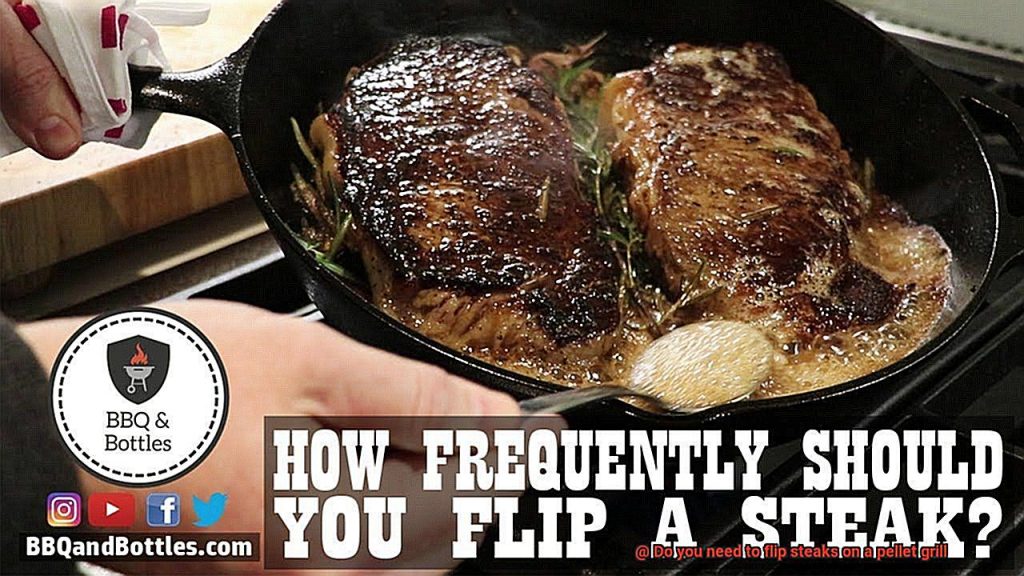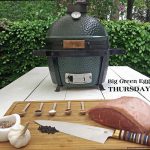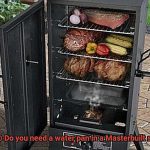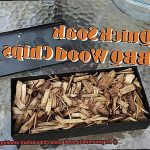Are you feeling perplexed about flipping steaks on a pellet grill? Don’t fret, my friend. Today we’re going to tackle the age-old question: do you need to flip steaks on a pellet grill? Pellet grills are some of the best grills out there – they’re easy to use, require less monitoring, and produce mouthwatering and evenly cooked steaks. But when it comes to flipping the steak, things can get a little confusing.
Some folks swear by flipping the steak only once, while others think that multiple flips are the way to go. And then there are those who argue that you shouldn’t flip the steak at all. So, what’s the answer? Well, it all boils down to how you like your steak cooked.
In this blog post, we’ll dive deep into the art of grilling steaks on a pellet grill. We’ll discuss the pros and cons of flipping steaks, how different steak cuts impact the flipping process, and how frequently you should flip your steak to achieve your desired doneness. Whether you’re a seasoned pitmaster or a newbie griller, this blog post is for you. So let’s ignite the grill and get cooking.
Contents
What is a Pellet Grill?
Enter the pellet grill, the convenient and versatile solution to all your grilling needs. But what exactly is a pellet grill, and how does it work?
At its core, a pellet grill (also known as a pellet smoker) uses compressed hardwood pellets as fuel to cook food. These pellets are made from sawdust and come in a variety of flavors, from classic hickory to sweet cherry. The pellets are stored in a hopper and fed into the firepot by an auger, where they are ignited by an electric heating element or hot rod. The temperature is then regulated by an electronic controller that precisely controls the speed at which the pellets are fed into the firepot.
This precise temperature control allows for a range of cooking methods, including smoking, grilling, roasting, and even baking. And with a variety of sizes and styles available, from portable models to large, heavy-duty units, there’s a pellet grill for every outdoor cooking need.
Pellet grills also offer the added benefit of infusing your food with delicious smoky flavors. Want to add a touch of applewood sweetness to your grilled chicken? No problem. Simply choose the appropriate wood pellet flavor and let the grill do the rest.
Benefits of Using a Pellet Grill
Say goodbye to traditional charcoal or gas grills and hello to the versatility and benefits of a pellet grill. As an expert in the world of outdoor cooking, I can confidently say that pellet grills offer a range of advantages that make them a popular choice among grill enthusiasts.
First and foremost, one of the primary benefits of using a pellet grill is its versatility. Pellet grills allow you to smoke, grill, bake, roast, and even braise all on one appliance. This not only saves time but also makes it perfect for outdoor cooking parties and family gatherings where you can cook a wide range of dishes without having to switch between multiple grills.
In addition to versatility, pellet grills offer consistent results with their digital temperature control feature. The temperature inside the grill remains constant throughout the cooking process, ensuring that your food is cooked evenly every time. This feature is especially useful for people who struggle with maintaining consistent temperatures on traditional grills.
Another advantage of using a pellet grill is its ease of use and low maintenance requirement. Unlike traditional charcoal or gas grills that require frequent refueling or cleaning, pellet grills don’t need much attention. The ash produced by the burnt pellets is collected in a removable ash cup, making cleaning up after a cookout hassle-free.
Finally, the smoky flavor infusion offered by pellet grills is perhaps one of the most significant benefits. Pellet grills use wood pellets as fuel, which come in various flavors such as mesquite, hickory, apple, and cherry. These flavors infuse into your food during cooking, giving it a unique taste and aroma that will have your taste buds dancing with joy.
Different Types of Steaks
Grilling the perfect steak on a pellet grill requires more than just high-quality meat. You also need to select the right cut of meat that will enhance the natural flavors and textures of your steak. That’s why it’s crucial to understand the different types of steaks available and their unique characteristics. Here are five popular cuts of steaks that you can choose from:
Ribeye
If you love rich and juicy steaks, then ribeye is the perfect choice for you. This cut is known for its high marbling, which makes it tender and flavorful. The fat melts during cooking, basting the meat, and creating a delicious crust.
Filet Mignon
This cut is taken from the tenderloin and is considered one of the most luxurious cuts of steak. It has a buttery texture and mild flavor, making it a favorite among steak lovers who want a leaner option.
New York Strip
This steak has a firmer texture than ribeye but still incredibly tender with a beefy flavor. It’s a versatile cut that can handle different cooking methods, such as grilling or searing.
Sirloin
For those who prefer leaner cuts with more pronounced beef flavors, sirloin is an excellent choice. It’s less fatty than other cuts but still juicy and flavorful when cooked correctly.
Flank Steak
This cut comes from the abdominal muscles of the cow and has a robust flavor with little marbling. It’s best served rare or medium-rare and sliced against the grain to enhance its tenderness.
When grilling steaks on a pellet grill, selecting the right cut is critical to achieving optimal results. Each cut requires different cooking times and techniques to bring out its unique flavors and textures. For instance, filet mignon is more delicate than ribeye and requires less time on the grill to avoid overcooking.
It’s also crucial to flip your steak at least once during cooking to ensure even cooking on both sides. For thicker cuts like ribeye, flipping them more than once can help create a delicious crust while preventing overcooking.
Why Thicker Cuts Need to be Flipped
Flipping the steak is a crucial step in ensuring that it cooks evenly, and this small but significant step can make all the difference in creating a perfectly cooked steak. As an expert in this field, let me explain why flipping thicker cuts of steak is so important.
Thicker cuts of steak such as ribeyes or porterhouses require more time to cook through than thinner cuts. If you don’t flip the steak, one side will be overcooked and dry while the other side may still be undercooked. This is where flipping comes in handy, as it allows each side to cook evenly, resulting in a perfectly cooked steak.
Flipping isn’t just about even cooking. It’s also about creating that irresistible crust that makes a grilled steak so delicious. Leaving a steak on the grill for too long without flipping can cause it to become soggy and lose its potential to develop that coveted crust. Flipping your steak allows each side to have the opportunity to develop a crispy outer layer that adds flavor and texture to the finished product.
Practical tips are essential when grilling thicker cuts of steak. It’s important to only flip once, as flipping too often can cause the meat to become tough and dry. Also, avoid pressing down on the steak with your spatula while it’s cooking, as this can cause the juices to escape and result in a drier final product.
Lastly, don’t forget to let your steak rest before cutting into it. Resting allows the juices to redistribute throughout the meat, resulting in a juicier and more flavorful final product. The wait may be tempting, but trust me – it’s worth it.
Why Thinner Cuts Don’t Need to be Flipped
In fact, flipping them can even harm the cooking process and lead to less desirable results. Let me explain why.
Thin cuts of steak, such as flank or skirt steak, cook quickly and evenly on a pellet grill due to the consistent heat distribution. Flipping these cuts can disrupt the cooking process, causing them to become tough and chewy. So, it’s best to leave them be and let the grill do its magic.
One reason thinner cuts don’t need to be flipped is that they are typically cooked at high heat for a short amount of time. This allows for a beautiful sear to develop on the exterior while keeping the interior juicy and tender. Flipping the steak could interrupt this process and cause the sear to be less pronounced.
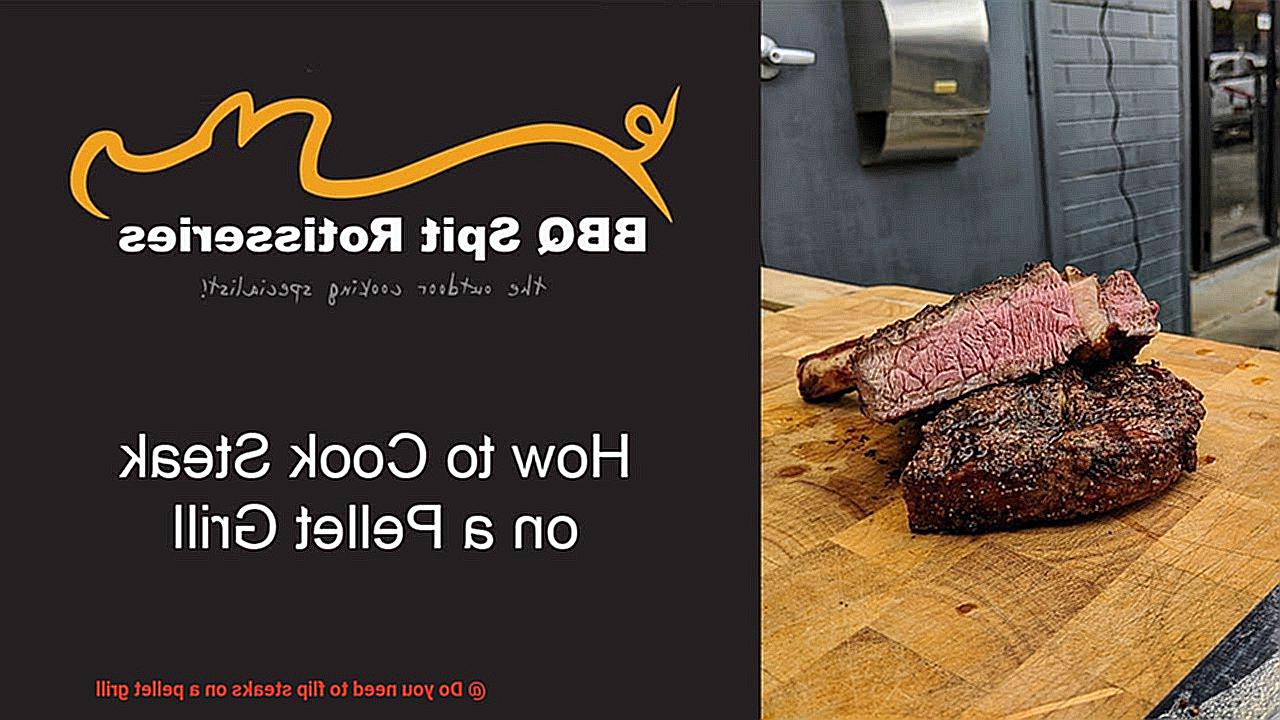
Another reason why flipping isn’t necessary for thinner cuts is that they don’t have as much fat running through them, so they are less likely to cause flare-ups on the grill. Flipping can create more movement and potentially lead to uneven cooking and burnt spots.
However, it’s important to note that thicker cuts of steak, such as ribeye or filet mignon, require flipping during the cooking process. These cuts need even cooking on both sides to develop a proper crust and reach the desired temperature throughout.
Tips for Flipping Steaks on a Pellet Grill
Grilling the perfect steak on a pellet grill can be a daunting task, but with a few tips and tricks, you can cook a juicy, tender, and flavorful steak every time.
Use Tongs Instead of a Fork
Using tongs instead of a fork is crucial when flipping your steak. Forks puncture the meat, causing the juices to escape and resulting in a dry steak. Tongs allow you to grip the meat without causing any damage, ensuring that your steak remains juicy and tender.
Wait for a Good Sear
Before flipping your steak, wait for a good sear to develop on the first side. This creates a flavorful crust and helps to keep the juices inside the meat. Depending on the thickness of your steak and the temperature of your grill, this could take anywhere from 3-5 minutes.
Flip Only Once
Flipping your steak too often can cause it to dry out and become tough. Aim to flip it only once during cooking and cook each side for roughly the same amount of time, depending on your desired level of doneness.
Don’t Press Down on Your Steak
Avoid pressing down on your steak with your tongs or spatula. This can cause juices to escape and result in a dry piece of meat. Let your steak rest for a few minutes before slicing into it. This allows the juices to redistribute, ensuring that each bite is tender and juicy.
Consider Your Pellet Choice
The type of pellet you use in your grill affects the flavor of your steak. Different pellets produce different flavors and intensities, so choose the right pellet for maximum flavor.
Other Considerations for Grilling Steaks on a Pellet Grill
Grilling the perfect steak on a pellet grill is a culinary art form that requires more than just flipping the meat. There are several other crucial factors to consider to ensure that your steaks are mouth-wateringly delicious. Temperature, seasoning, and resting time are essential elements to keep in mind for an excellent grilling experience.
Firstly, preheating your pellet grill to the correct temperature is crucial to achieving a perfectly cooked steak. For medium-rare to medium steaks, a temperature of 450-500°F is ideal. This guarantees even cooking and creates that desirable sear on the outside of the meat.
Next, seasoning your steak with the right blend of herbs and spices can elevate the flavor profile of your meat. Whether you prefer a simple salt and pepper rub or a more complex seasoning blend, generously rub it onto your steaks before placing them on the grill. This adds an extra layer of flavor to your steak, making it irresistible.
Once your steaks are on the grill, resist the temptation to flip them too often. Constant flipping can prevent a flavorful crust from forming on the surface of your steak. Instead, flip them once or twice during the cooking process for an evenly cooked steak with that sought-after char.
Finally, after grilling your steaks to perfection, give them ample resting time before slicing into them. This step is critical as it allows the juices to redistribute throughout the meat, resulting in a tender and juicy final product. Skipping this step can result in dry and tough steaks.
6N4q2D6WM58″ >
Conclusion
In conclusion, grilling the perfect steak on a pellet grill is an art form that requires more than just high-quality meat. It’s about understanding the unique characteristics of different cuts and the benefits of using a pellet grill. With versatility, consistent results, ease of use, low maintenance requirements, and delicious smoky flavor infusion, pellet grills are a game changer for any grill master.
But what about flipping steaks on a pellet grill? Well, it all depends on your desired level of doneness. Thicker cuts require flipping to ensure even cooking and create a mouthwatering crust. On the other hand, thinner cuts should be left alone to avoid becoming tough and dry. And don’t forget practical tips like using tongs instead of a fork, waiting for a good sear before flipping, only flipping once, avoiding pressing down on the steak while cooking, and considering your pellet choice.
Of course, there are other critical considerations when grilling steaks on a pellet grill. Preheating your grill to the correct temperature is essential for achieving that perfect sear. Seasoning your steak with the right blend of herbs and spices can take your dish to another level. Avoid constant flipping during the cooking process and give ample resting time before slicing into them to let those juices settle in.
With these tips in mind, you’ll be well on your way to impressing family and friends with perfectly cooked steaks on your pellet grill.

